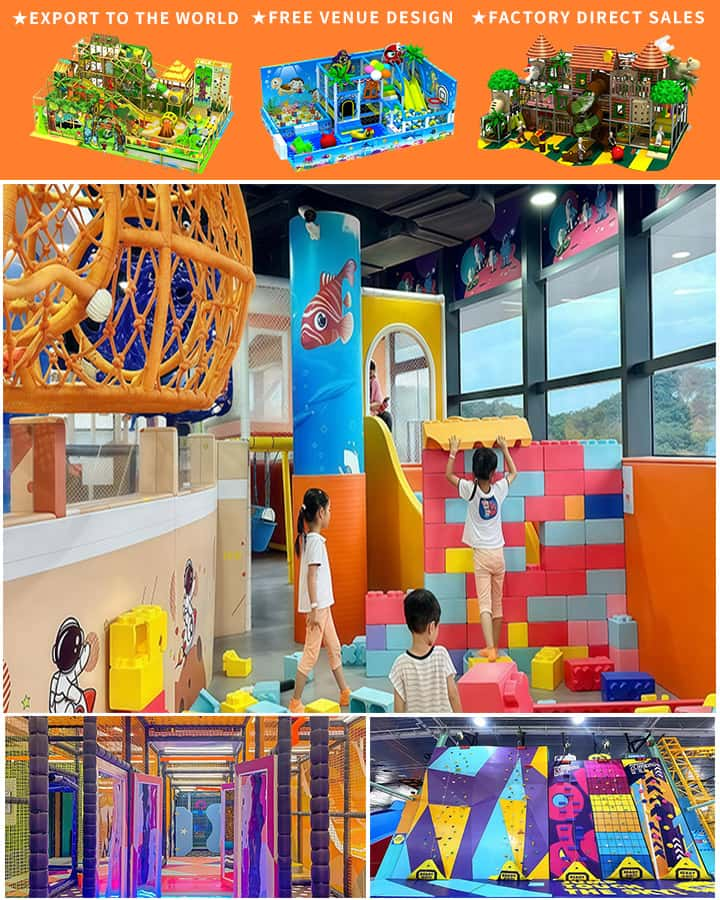In today’s fast-paced, technology-driven world, it can be challenging to find safe and engaging ways for children to expend their energy and creativity. Indoor playgrounds have emerged as a popular solution, offering parents a reliable option for their children to play, learn, and develop essential physical skills regardless of the weather or time of year. These facilities have become an oasis where fun meets safety, providing kids with a stimulating environment that encourages both active play and social interaction.
Why Indoor Playgrounds Are Beneficial
Indoor playgrounds are designed with the needs and safety of children in mind. Unlike outdoor playgrounds that may be subject to adverse weather conditions or limited daylight hours, indoor playgrounds offer a controlled, climate-regulated environment that ensures year-round accessibility and comfort. The soft, cushioned surfaces reduce the risk of injuries from falls, making them a safer alternative to traditional playgrounds. Additionally, these facilities often employ vigilant staff members who monitor the activities to ensure that every child has a safe and enjoyable experience.
Types of Equipment and Activities
 Modern indoor playgrounds boast a variety of equipment and activities that cater to different age groups and interests. From climbing walls and slides to trampolines and ball pits, there is something for every child to enjoy. Many indoor playgrounds also feature themed areas such as pirate ships, castles, and space adventures, which stimulate imagination and creativity. For younger children, sensory play areas with interactive toys and textures provide a rich environment for tactile exploration and learning.
Modern indoor playgrounds boast a variety of equipment and activities that cater to different age groups and interests. From climbing walls and slides to trampolines and ball pits, there is something for every child to enjoy. Many indoor playgrounds also feature themed areas such as pirate ships, castles, and space adventures, which stimulate imagination and creativity. For younger children, sensory play areas with interactive toys and textures provide a rich environment for tactile exploration and learning.
Interactive games and digital play zones are increasingly common in indoor playgrounds, combining physical activity with technology to engage children in a dynamic way. These elements not only make the experience more enjoyable but also help in developing coordination, balance, and motor skills.
Social Benefits
One of the standout features of indoor playgrounds is their ability to foster social interaction among children. Whether they are playing together on the jungle gym or sharing a laugh in the ball pit, these settings naturally encourage teamwork, communication, and friendship-building. For parents, this provides a much-needed respite as they watch their children make new friends and navigate social scenarios in a safe and supervised environment.
Special Events and Programs
Many indoor playgrounds go beyond merely providing a place to play by offering special events and educational programs. Birthday parties, themed playdates, and parent-tot sessions are just a few examples of how these venues create memorable experiences for families. Some facilities even collaborate with educators to host workshops that integrate play with learning, covering topics such as science, math, and art through fun and interactive activities.
Accessibility and Convenience
The strategic locations of many indoor playgrounds, often situated within family-friendly complexes or shopping centers, add to their appeal. They provide an easily accessible destination for parents who are looking to combine errands or leisure activities with their children’s playtime. This convenience means that families can maximize their outings, enjoying quality time together without the hassle of traveling long distances.
Conclusion
Indoor playgrounds serve as vibrant hubs of activity, safety, and socialization for children. By offering a diverse range of play structures, interactive experiences, and community-building opportunities, they fulfill a crucial role in promoting holistic development and well-being. As society continues to evolve, the importance of these spaces will undoubtedly grow, cementing their status as indispensable sanctuaries for children’s entertainment and growth. Whether you’re a parent seeking a fun day out or an educator aiming to enrich young minds, indoor playgrounds offer something truly special for everyone involved.




